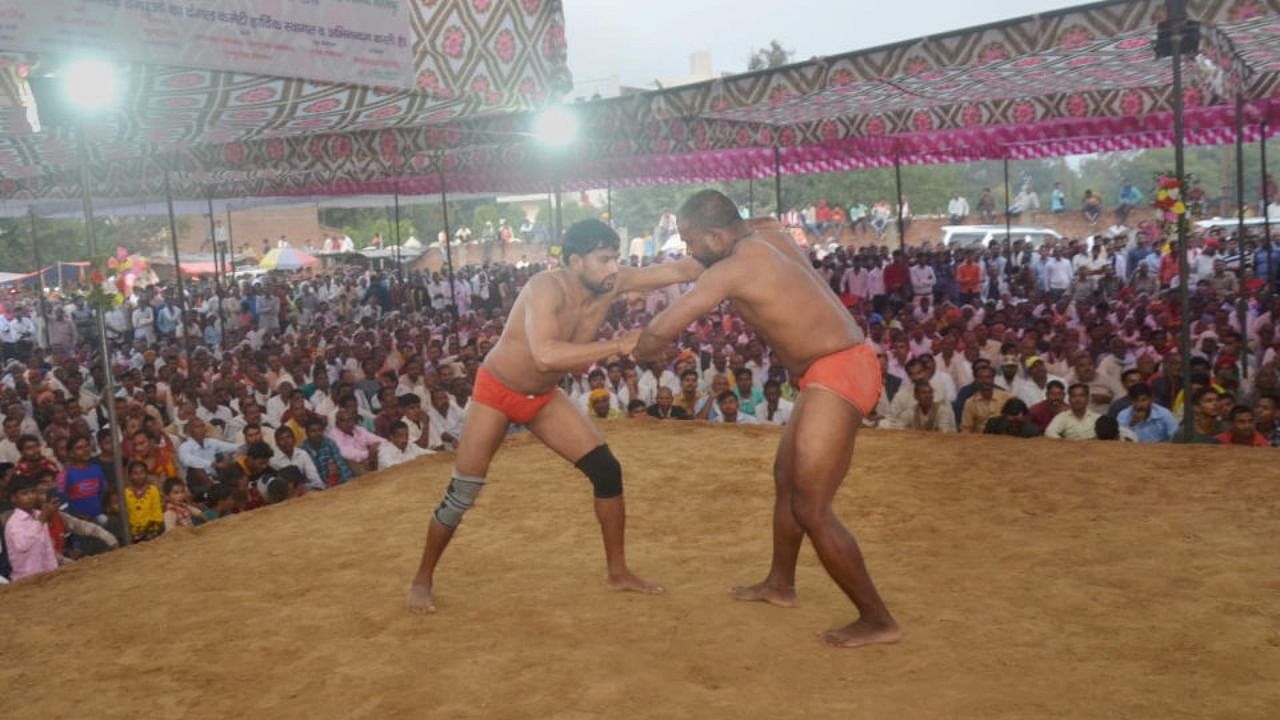
Fresh from winning a bronze at the world U-23 wrestling championships, Nisha Dahiya was preparing for the Senior National Championships in Gonda, UP, earlier this month when frenetic phone calls enquiring about her well-being left her deeply disturbed. The 23-year-old was being mistaken for another budding wrestler of the same name, who was shot dead along with her brother at Sonipat, Haryana, in a gruesome killing near an akhara (training centre) where she trained.
The news of her killing spread with such speed that Nisha had to put up a video, with Rio Olympics medallist Sakshi Malik by her side, to clear out she was alive and safe.
The one who met the tragic end was 21-year-old Nisha, a young talent who had medals at School and University level, and her 18-year-old brother Suraj. They were shot dead allegedly by her coach Pawan Barak. Their mother was also grievously injured during the attack. The locals were so enraged over the incident that they burnt down the wrestling training academy.
The brutal killings of Nisha and her brother are among a series of crimes that involved wrestlers and coaches, exposing its seamy underbelly overwhelmingly this year.
With a spate of such violence in wrestling reported in recent months, it appears as if the dark side of the sport, lurking around for so long, was only waiting to be unraveled. That it is happening in a sport that has given India seven Olympic medals, including two in Tokyo this year, is unsettling.
It caps the depressing picture, India’s most successful Olympian — Sushil Kumar – was arrested on charges of murder, abduction and criminal conspiracy related to the violent brawl on May 4 between two groups.
Sushil was on the run from the law for three weeks, sneaking past at least six state borders. When he surrendered, the pictures of him hiding his face in a towel left sports fans and his colleagues dejected and baffled.
It was the same Sushil who during his heydays would be swarmed by the thousands post his feats on the mat; his face would be popping up from rings of garlands, flashing a smile to breathless photographers and cameramen, the drummers in the background beating themselves to exhaustion in celebration.
With his exceptional achievements in international wrestling, Sushil is credited for blazing a new trail for Indian wrestling. His rise put focus on modern ways of training and diet. The influx of money, sponsors, foreign training and coaches coupled with a lot of ambitious grapplers triggered a golden era for Indian wrestling. Movies too were made on wrestlers’ life, adding to its charm pan India.
Criminal involvement
But somewhere the sport that is so popular in North India has also been gripped in the clutches of crime. The akharas or wrestling academies practice a strong ‘guru-shishya parampara’ but there are elements within the fraternity that have had a negative influence.
Wrestlers and coaches feared the incident had the potential to discourage parents from sending their children to train at the various wrestling academies mushrooming across Haryana. They hoped and prayed for it to be a one-off episode. It was not.
Those in the knowhow are not surprised. Neither are such episodes new. There are several socio-economic factors too impacting the fates of these grapplers. With lack of formal education and limited options, many failed wrestlers are drawn to work as bouncers, few even joining mafia gangs and becoming recovering agents for various agencies. The surfacing of this grim reality needs an introspection based on facts, not in extremes.
While these incidents have eroded the feel good factor surrounding Indian wrestling, it would be unfair to define the sport only the damning acts of a few. One hopes the continued success of Indian wrestling will once again bring reassurance and turn focus on the limitless potential of what a sport has to offer.
The future demands better accountability, monitoring of wrestling training centres, and educating the wrestlers who come from humble backgrounds. The Haryana government is putting measures in place to overhaul the system by drafting a new set of rules and regulations for the akharas. Only those who follow these guidelines would be handed a license that would be mandatory for the running of an akhara/centre.
Dronacharya awardee Mahabir Prasad welcomed the move, and stressed on the need of education among the wrestlers. “I believe it is one area we need to work on, we need to ensure education of children who are staying in the akharas. What happened with Sushil was due to the lack of education,” Prasad said.
“I also feel all centres should be yearly or bi-monthly monitored by the police, even the ones who are doing well to weed out bad elements. A fairplay award, the way it is given in cricket can also be constituted. With four violent incidents taking place in nine months, these measures need to be put in place with urgency. At the same time, we should not devalue the importance of akharas, many of our champions have come from here.
“The federation too is doing its bit, but it is at the lower level we need to be alert,” said Dronacharya Awardee coach Prasad.
(Pragya Tiwari is Delhi-based journalist)
Watch latest videos by DH here: